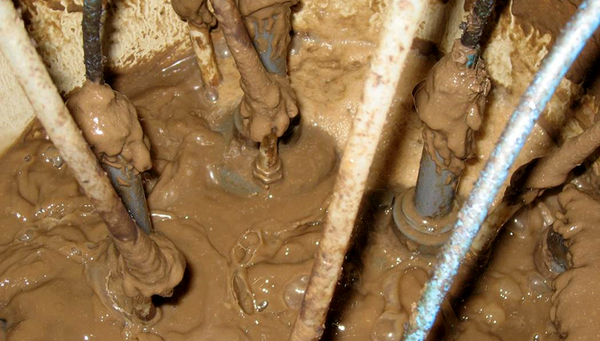News Detail
Experts collect information on risks of COVID-19 in wastewater
August 28, 2020 |
The review paper “Rethinking wastewater risks and monitoring in light of the COVID-19 pandemic” was co-authored by 34 contributors from around the world. What was Eawag’s contribution?

Eberhard Morgenroth: For May 2020 I had been invited to participate in the “International Water Summit” at the Ben-Gurion University in Israel. Future perspectives for water in our society were going to be discussed here. But it had to be cancelled due to COVID-19. This article has been created based on the group of invited participants. An in-depth evaluation of the propagation pathways of SARS-CoV-2 requires the cooperation of different disciplines. The co-authors included a number of experts from the fields of microbiology, virology and hygiene. My contribution was to provide a critical perspective of technologies in urban water management that are already being implemented today and those which will be possible in the near future.
It was previously assumed that SARS-CoV-2 viruses or gene fragments thereof were found in wastewater, but that there were hardly any active, i.e. infectious, viruses among them. Should this assessment be corrected?
In the months since the outbreak of the COVID-19 pandemic, the understanding of the propagation pathways of SARS-CoV-2 has been constantly changing. There is still no evidence today that wastewater can be a relevant source for SARS-CoV-2 infection. However, we know that viruses can basically survive in wastewater and we must therefore be careful when coming into contact with wastewater. The aim of the review was to evaluate to what extent wastewater could also be relevant for SARS-CoV-2 infection. Here are a number of unanswered questions about the amount of infectious SARS-CoV-2 in wastewater and the minimum dose for an infection.
The article states that SARS-CoV-2 viruses could also enter natural waters or even groundwater through leaks or during rainy weather from the sewage system and form reservoirs there. Should we expect the virus to strike back from such reservoirs at any time?
Viruses have a limited lifetime in water bodies and groundwater. The lifetime depends on the ambient conditions. As mentioned above, we do not even know whether the (waste) water path is relevant for an infection with SARS-CoV-2. If it turns out that the water path is relevant, then a risk assessment would still be needed – we are presently a long way from that.
Based on your findings, do those responsible for operating sewage systems and wastewater treatment plants have to take new measures?
The current recommendations of the WHO, CDC or IWA* still assume that wastewater is not a relevant source of infection with SARS-CoV-2. For the population and also for people working with wastewater (e.g. at a wastewater treatment plant or in research at Eawag), normal hygiene and occupational safety measures must continue to be observed.
Does the SARS-CoV2 virus make it difficult to reuse treated wastewater?
It would be very relevant for wastewater treatment if it were found that wastewater can be a relevant path for SARS-CoV-2 infection. In most WWTPs in Switzerland, viruses are not systematically removed. In some other countries, wastewater is disinfected with UV or chlorine (e.g. USA). Currently, there is no need for action on the part of WWTPs in Switzerland due to SARS-CoV-2. In the future, however, the hygienic quality of treated wastewater will become increasingly relevant – whether because of the spread of antibiotic resistance or because of pathogenic organisms, such as SARS-CoV-2. In addition to processes for disinfection, membrane processes will also be relevant here. Particularly when treated wastewater is to be reused, the demands on hygiene will naturally increase. And I also see for Switzerland that in the medium term, the reuse of wastewater will be relevant.
*[WHO: World Health Organisation; CDC: Centers for Disease Control and Prevention (USA); IWA: International Water Association]
Cover picture: Eawag

